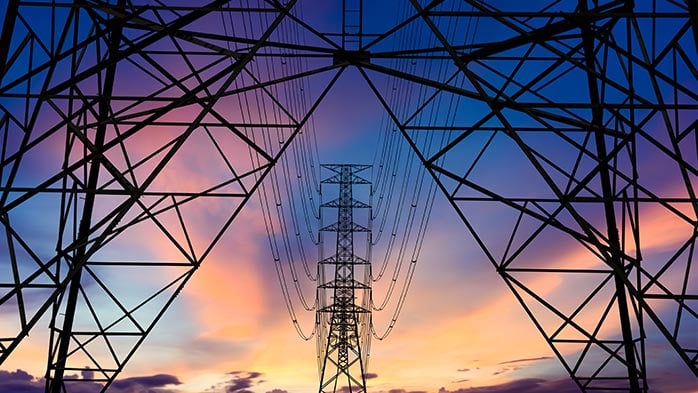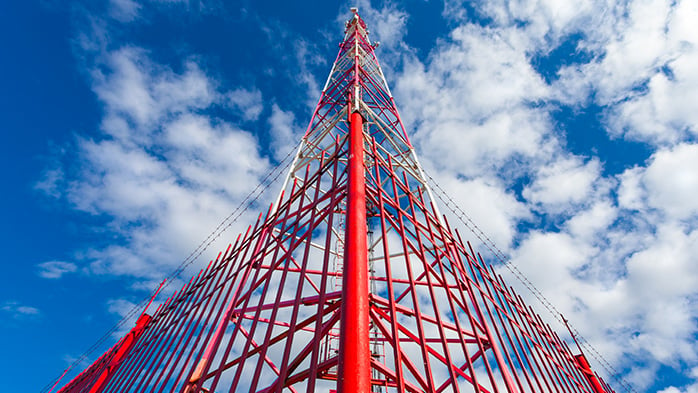As of 2020, CRU estimates total HV+EHV subsea cable demand, including demand relating to both offshore wind farms and subsea interconnections, accounted for around 22% of the total HV+EHV cable market.
Due to the anticipated surge in offshore wind capacity globally, subsea cable demand is set to take off and by 2027 CRU estimates it will account for over 42%, representing a CAGR of 22% between 2020-2027. Such a booming market is increasingly gaining the attention of power cable producers worldwide, which is reflected in recent announcements, capacity expansions and investment focus across major producers.
In the below excerpts, taken directly from CRU’s 2021 edition of the HV, EHV & Submarine Cables Market Outlook, CRU reviews the impact that Covid-19 has had on this high-value power cable sub-sector. We also analyse the importance of the offshore wind industry in dictating subsea cable demand growth over the 2021-2027 period, first by looking at estimated growth in generating capacity, then by looking at the sector’s consumption of subsea cables from a bottom-up perspective, utilising CRU’s extensive project databases.
Market review: Covid-19 had a mixed impact on HV+EHV
2020 was certainly a year to forget for many wire and cable producers, especially those highly leveraged to low voltage power or energy cables. The Covid-19 pandemic and associated economic weakness led to sharp declines in cable demand across the world. The HV+EHV sector has once again fared better during such challenging times. Indeed, CRU estimates demand for LV+MV power cable contracted by 5.7% last year, total HV+EHV (land and subsea) actually grew, by 4.7% y/y according to conductor tonnes or by 2.9% when looking at core-km.
In terms of core-km demand growth, the standout performer in 2020, despite the global pandemic-induced recession, was subsea cables. Indeed, CRU estimates the subsea HV+EHV cable market to have expanded by over 35% in 2020. Elevated growth for subsea HV+EHV cables can be attributed to a number of unique market factors, such as a relatively small base, alongside longer-lead times and higher levels of overall funding.
According to recent data compiled by BloombergNEF, offshore wind financing in 2020 H1 totalled $35 bn, up 319% y/y, well above 2019’s record full-year figure of $31.9 bn. The first half of this year saw investment decisions made on 28 sea-based wind farms, which bodes well for future cable demand from this end-use sector.
Increasing investment and project awards within the offshore wind sector are exemplified by the strengthening in producer’s subsea backlogs. For example, just between Prysmian and Nexans, the value of their backlog of subsea HV+EHV cable orders reached $3.3 bn as of end-2020 Q3.
Market outlook: Offshore wind to drive demand growth
Renewables are becoming cheaper and more prevalent
As renewable energy technologies mature, there has been a continuous drop in their costs, which has made them a competitive alternative to fossil fuel plants. This, combined with the Paris Agreement’s commitment to lower greenhouse gas emissions, has led to a boom in their deployments.
The increased competitiveness of renewables is illustrated in Figure 2 above, which shows a continuous drop in the levelised cost of electricity (LCOE), a measure of the average cost of electricity generation over a power plant’s lifetime. In fact, solar PV and offshore and onshore wind are within the fossil fuel cost range, which indicates similar energy cost.
This is driven by improving technologies, economies of scale, growing developer experience, and increasingly competitive supply chains. The drop in the wind LCOE is driven by the use of larger wind turbines, which translates into lower foundation, maintenance, and cabling costs per kWh. Lower costs and policy focus on decarbonisation have led to a boom in renewable power commissions, compared to conventional ones. In fact, according to IRENA, renewables accounted for 72% of all new capacity additions in 2019.
Not all renewables are equal
Offshore wind is by far the most important renewable power type for HV+EHV cable demand. It is the only renewable power type to always require HV cable, and to often use EHV cable. On the other hand, onshore wind and solar PV power plants occasionally use HV cable for grid connection, while overhead conductor is also widely used. CRU has heard of a solar PV plant using up to 220 kV cable in the GCC, which is close to our EHV bracket of 245 kV, although this is a rarity. To date, we are unaware of the use of EHV cable in onshore wind and solar PV applications. Offshore wind accounts for almost the entirety of the renewable sector’s HV+EHV cable requirements. Subsequently, it is also the power source which we analyse the closest.
Which offshore wind applications use HV+EHV cable?
There are three offshore wind applications which require HV+EHV cable, outlined below:
- Export cables, which carry electricity from the offshore substation to an onshore grid location. The total distance can be anything between 5 km and above 100 km, depending on the farm’s location.
- Inter-array cables, which connect each turbine to the offshore substation platform.
- Platform-to-platform cables, which are occasionally used to connect two offshore substations together, or to link an offshore substation to an offshore DC converter platform.
As can be seen in Figure 3 below, export cables will be the biggest offshore wind end-use consumer for both HV+EHV cable over the 2021-2027 period.
What is the project pipeline for offshore wind?
CRU expects the number of offshore wind farms to triple over the 2021-2027 period, reaching a total of 309 in 2027. As Figure 4 indicates, this reflects the addition of an average of 29 new offshore wind farms each year. Moreover, the trend towards larger wind farms translates into the quadrupling of global offshore wind capacity, with our forecast largely in agreement with the Global Wind Energy Council expectations of 146 GW global capacity in 2027.
In terms of the location of future offshore wind farms, Europe and China will remain the key markets, accounting for 57% and 24% of new capacity. This is a drop from their historical shares, which reflects the growing importance of the US and Taiwanese markets. More specifically, the US and Taiwan (China) are expected to account for 12% and 5% of future commissions, respectively.
That being said, the falling European and Chinese shares do not mean that the markets are not booming. In fact, Europe and China are expected to add 70 GW and 30 GW, respectively, over the 2021-2027 period. This is considerably higher than their 21 GW and 8 GW additions during the past seven years.
What are our forecasts for subsea HV+EHV cable?
If we include the active subsea interconnect market, CRU estimates total HV+EHV subsea cable demand to increase by a CAGR of 22% over the 2020-2027 period. However, as illustrated in Figure 5 below, we forecast subsea cable demand specifically relating to the offshore wind sector to grow by a faster CAGR of 27% over the same period. This includes subsea cables used for export, array, and platform-to-platform applications.
Array cables will see the highest growth rate, with a CAGR of 66%, because of the ongoing substitution from MV arrays to HV ones. In fact, if we are to add HV+MV array applications together, the segment will grow by a much lower 18% CAGR over the forecast horizon. In total, over the 2020-2027 period, the offshore wind sector will require 5.6 times more HV+EHV cable than it did over the 2014-2020 period.
In terms of different regions, Europe’s offshore wind sector will require the most HV+EHV cable, while North America will grow the fastest (see Figure 6). More specifically, European demand will be driven by the strong project pipeline in Germany, the UK, Belgium, France, and the Netherlands. North America’s high growth rate partially reflects its currently small market size and a large project pipeline in the US, with 24 farms expected to be commissioned over the forecast horizon.
In terms of China, it is important to remember that 2020 was a record year, with the country accounting for half of all new offshore wind installations globally. A high 2020 pulls down the Chinese mid-term CAGR (2020-2027) to 15.4%, with the 2019-2027 CAGR being 23.7% instead.












